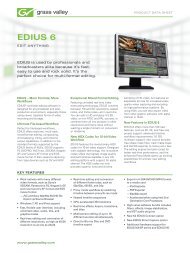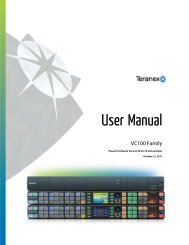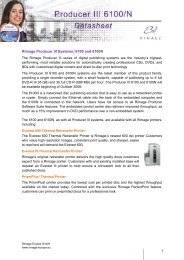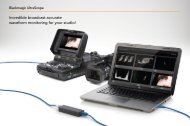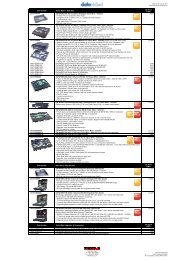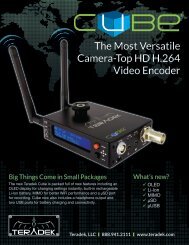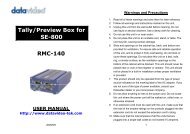Manual - Holdan.eu
Manual - Holdan.eu
Manual - Holdan.eu
Create successful ePaper yourself
Turn your PDF publications into a flip-book with our unique Google optimized e-Paper software.
10.0 RS232 / IP CONTROL SPECIFICATION<br />
PLEASE NOTE: Not all units support RS232 and/or IP (Ethernet)<br />
communications – check to see if this feature is present on your unit.<br />
This section outlines how to control a unit via an RS232 or Ethernet link (if<br />
fitted to your unit), using ASCII-based commands. It details how to send and<br />
receive serial data to perform many of the functions that a user has access to<br />
on the unit.<br />
Not all units will support the full range of adjustments listed – this will depend<br />
on the complexity of the unit you have.<br />
10.1 Communication protocol basics<br />
Packets of ASCII data containing hexadecimal numbers are exchanged<br />
between the unit and controller via an RS232 or IP link (you cannot use both<br />
at the same time).<br />
The RS232 standard is 57600 baud, 8 bits, no parity and 1 stop bit, although<br />
this can be changed by the user (see ‘System’ menu).<br />
No flow control is used - however all control packets start with an ASCII 'F',<br />
end with carriage-return (13 decimal, 0x0D hexadecimal) and all such packets<br />
sent to the unit will be acknowledged (thereby provided software<br />
handshaking). Note that a line-feed (LF) should not be sent.<br />
It may take around 30ms (0.03 seconds) for an RS232 command to be<br />
actioned and acknowledged – this will vary between different models.<br />
ASCII-hex data is used where a number is encoded into its hexadecimal<br />
equivalent with leading zeros – e.g. Where '00' is decimal value 0, '80' is<br />
decimal 128 and 'FF' is decimal 255. In other words, two characters are sent<br />
for each byte encoded.<br />
Any gap of more than 1 second between the characters of a control command<br />
sent will cause a time-out - and previous characters sent will be lost.<br />
Write packets (sending command functions to the unit) are always 20<br />
characters long (including a carriage return at the end). The unit will respond<br />
with a full 20 character message indicating what has changed. This returned<br />
payload will reflect the actual value of the parameter changed. If the user<br />
requests a value out of bounds then the limit value is used, and the payload<br />
will then reflect the limited value used.<br />
Read packets (sent to request information from the unit) are always 14<br />
characters long (including a carriage return at the end), the response from the<br />
unit will be a 20 byte message with the Write flag (since it is ‘writing’ the value<br />
back to the host) and the ACK flag set.




